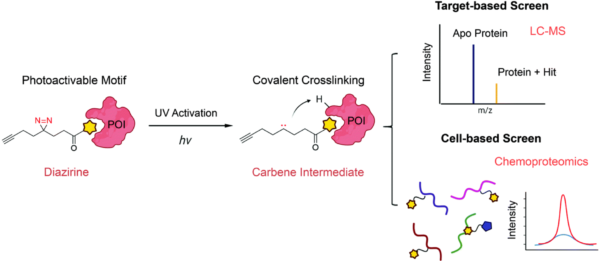RNA-protein interactions play critical roles in various cellular processes, including gene expression, RNA processing, and post-transcriptional regulation. Dysregulation of these interactions can lead to numerous diseases, such as cancer, neurodegenerative disorders, and viral infections. Small molecule inhibitors have emerged as powerful tools to modulate RNA-protein interactions and offer promising therapeutic opportunities. This article will explore the use of inhibitors library in targeting RNA-protein interactions, with a special focus on small molecule inhibition and its potential implications in advancing biomedical research and drug discovery.
The Significance of RNA-Protein Interactions:
RNA-protein interactions are essential for the proper functioning of cellular processes. RNA-binding proteins (RBPs) bind to specific regions of RNA molecules, influencing their structure, stability, localization, and function. These interactions can regulate gene expression, mediate RNA splicing, control translation and protein synthesis, and participate in RNA degradation pathways. As RNA-protein interactions have a significant impact on cellular processes, dysregulation can lead to diseases, making them attractive targets for therapeutic intervention.
Small Molecule Inhibition of RNA-Protein Interactions:
Small molecule inhibitors have demonstrated potential in modulating RNA-protein interactions. These inhibitors typically target specific binding sites on either the RNA molecule or the RNA-binding protein. By disrupting the interaction between the RNA and its binding protein, these small molecules can selectively alter the functional outcome of RNA-protein complexes. Small molecule inhibitors can be designed to prevent the binding of RBPs to RNA, interfere with protein-protein interactions within the RNA-protein complex, or inhibit the enzymatic activity of RBPs. This approach offers a versatile and specific means to manipulate RNA-protein interactions for research and therapeutic purposes.
Inhibitors Library for RNA-Protein Interaction Studies:
The application of an inhibitors library provides a valuable resource for studying RNA-protein interactions. This library consists of diverse small molecules that have been synthesized or collected, each with the potential to modulate specific RNA-protein interactions. The library allows for the screening of a large number of small molecules to identify compounds that exhibit selective inhibition or modulation of RNA-protein interactions of interest. High-throughput screening and structure-based approaches can be employed to identify small molecules with desirable properties, including potency, selectivity, and pharmacokinetic profiles.
Advancing Biomedical Research and Drug Discovery:
The use of an inhibitors library in RNA-protein interaction studies has wide-ranging implications. It enables researchers to identify novel small molecules that selectively target specific RNA-protein interactions, providing insights into the functional consequences of these interactions. These findings can inform the development of therapeutic strategies for diseases associated with dysregulated RNA-protein interactions. For example, small molecule inhibitors could be designed to target RBPs involved in cancer progression or viral replication, allowing for the development of novel therapeutics. Additionally, the inhibitors library can aid in the elucidation of the molecular mechanisms underlying RNA-protein interactions, helping to unravel the complexity of gene regulation and RNA biology.
Challenges and Future Perspectives:
While small molecule inhibition of RNA-protein interactions holds great promise, there are challenges that need to be addressed. Achieving sufficient selectivity and specificity is crucial to minimize off-target effects. Furthermore, the design and synthesis of small molecules that can efficiently penetrate cellular barriers and reach the desired target site pose significant challenges. Optimization of pharmacokinetic properties, such as stability, bioavailability, and toxicity, is also essential for translating small molecule inhibitors into effective therapies. Collaboration between researchers, chemists, and pharmacologists is crucial in addressing these challenges and advancing the field of RNA-protein interaction research.
Conclusion:
The use of small molecule inhibitors library provides a powerful approach to investigate and modulate RNA-protein interactions. By targeting specific binding sites on RNA or RNA-binding proteins, these inhibitors offer selectivity and versatility in manipulating these interactions. The inhibitors library facilitates the screening and identification of small molecules that selectively inhibit or modulate specific RNA-protein interactions, advancing our understanding of RNA biology and gene regulation. Furthermore, these insights hold promise for developing therapeutic interventions for diseases associated with dysregulated RNA-protein interactions.
Keywords: RNA-protein interactions, Small molecule inhibition, Inhibitors library, RNA-binding proteins, Gene expression, Post-transcriptional regulation, Therapeutic opportunities, High-throughput screening, Drug discovery, Selectivity, Specificity, Biomedical research, Molecular mechanisms, Translational research.


